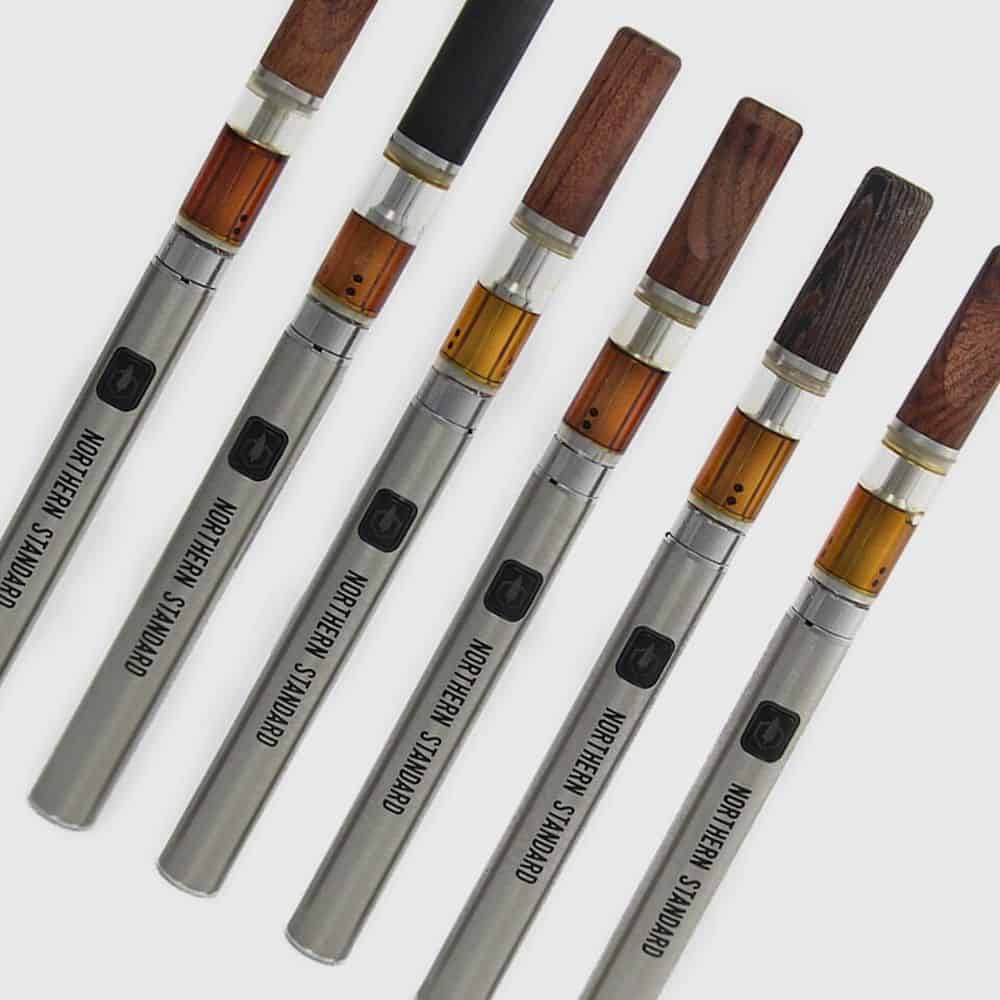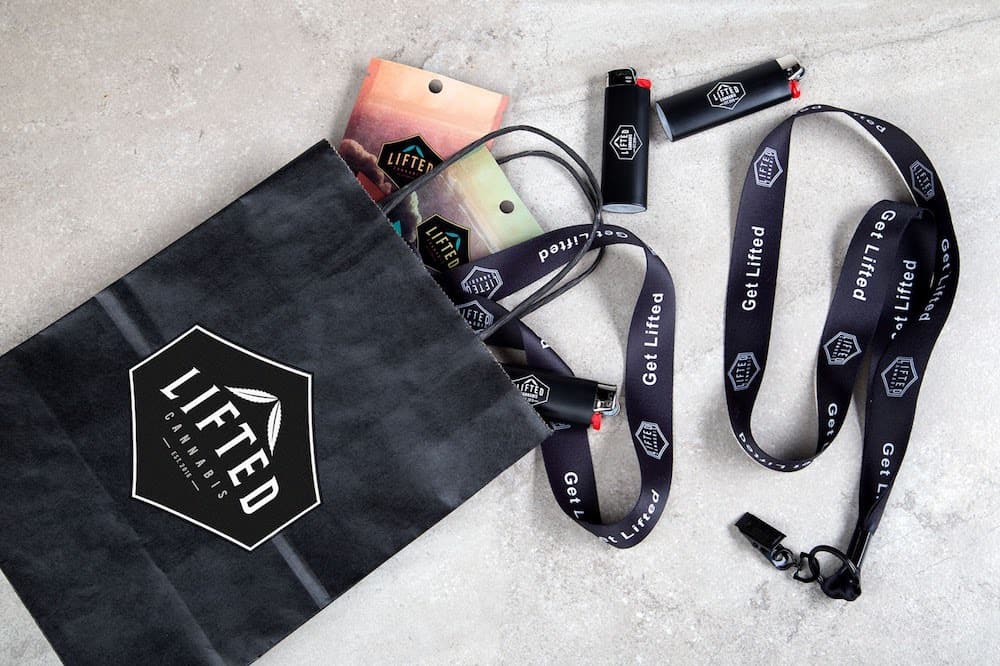Editors Note: Welcome to our newest bi-weekly column, Classing Up Cannabis. Consider this your go-to spot for fluid, applicable advice regarding the image, design, marketing, and branding of your cannabis business. Right now, most of the content in the cannabis zeitgeist neglects to highlight or speak to the minds behind businesses—you know, those fueling the industry. Whether you’re just launching a brand or your long-time business has weathered the transitional storm of complex regulation, we dedicate this column to you.
What’s in a name? Cannabis called by any other name would smell just as dank, but that doesn’t mean it wouldn’t have any effect on how we perceive it. Names are important. We use names to distinguish objects and people—even brands. A great name can fill us with confidence and desire, and even make us more likely to purchase a product. A bad name, on the other hand, can completely turn us off from something that we may actually enjoy.
That’s why it’s essential for every canna-business to put thought and care into what they name their cannabis brand. When the industry was primarily underground, it didn’t matter if a strain was called Bigfoot Stank, or something equally ridiculous. But in a world where cannabis consumers are becoming increasingly savvier, it’s paramount that your branding evolves with the market.
Along with packaging, a brand’s name has a significant effect on how it’s perceived and who the target audience is. In fact, there’s a science to brand names, and we’ve elaborated on some of the processes involved in crafting the perfect canna-brand name.
What Kind of Cannabis Brand Do You Want?
The most critical step in the naming process is determining how you’d like your brand to be interpreted. Do you want to be a luxury cannabis brand that’s loved by the rich and famous? Or do you want to be the working man’s weed? The name you choose will inevitably play into what it’s associated with.
Additionally, be hyper-specific with the words used to build your brand name. Language is tricky; people harbor memories, feelings, and biases associated with certain words. If a collection of words are selected that have a positive association with your ideal customer, you’re bound to pique their interest and are already halfway to winning their hearts.
If you want to avoid any pre-existing associations with your brand, picking a collection of words that don’t usually go together could be smart. Although this tactic is more important today than it was 40 years ago, it has a shining track record. Think about Mastercard, for instance: before the company changed its name in the ‘70s, these two words were never seen together. Today, the card is a household name.
Mastercard changed its name in the 1970s to reflect its brand evolution after taking on international partners and joined the new name with a logo of two overlapping circles to represent the unification of industry and international capabilities.
New word associations are created when you pick two terms don’t often go together. So, when utilizing this strategy, try to implement sound-naming mechanics and strategy. Think: alliteration, rhyming, or an onomatopoeia (a word describing a sound, such as meow, sizzle, honk, beep, etc.) to make your name pop.

Courtesy of Northern Standard
Brand Name Types
One thing to note is there are four different types of brand names. Each one has its strengths (and, of course, weaknesses), so when crafting and deciding on your brand name, think about which model would best communicate your values. The four brand-name types are:
Descriptive Names:
Descriptive names indicate what your company, product or service does. The fast-food industry is a prime example of this. Tons of restaurants and chains have descriptive names, like: Pizza Hut, Burger King, Taco Bell, etc.
When looking at the cannabis industry, the most obvious descriptive name has to go to Medical Marijuana Company of America. Using descriptive names are ideal for multiple reasons, but mostly to help position your brand within the industry and to inform the consumer as to what your business does before they walk through the door.
Although a smart tactic, using descriptive names has its cons. Especially in the cannabis market, there’s a saturation of similar names—and they’re all using this descriptive-name strategy, which can cause brand confusion. Another weakness is the fact sometimes the evolution of a brand moves away from what a descriptive business name alludes to, or promotes. Although there’s no law saying that a company’s products or services must be within the parameters of its name, it actually diminishes the strength of a brand if its name and products don’t match up. Think about what happened to MTV: the station went from showing music videos and being the epicenter of all music to a reality-tv hub—and the butt of pop-culture’s jokes. That’s why they’re pivoting back toward music-driven content.
Acronym:
Some of the world’s biggest brands have acronyms for names, like IBM or GE. The main reason acronyms are used in branding is because they’re easy to say and remember. An excellent example of this would be UPS, which stands for United Parcel Service. It might not be the hardest name to remember, but UPS is a lot easier to say.
The downside of using an acronym is that it doesn’t say a whole lot about your company and, thus, makes it harder to stand out. People see a string of letters—and those letters may stick with them—but odds are they won’t know what it stands for. So before you pick an acronym name, make sure it makes sense for your brand. The last thing you want is to referred to as alphabet soup.
Experience-Oriented Names:
Names like Apple or Virgin Group are built around a feeling, experience, or expectations. They tend to offer an outstanding element of simplicity. If chosen correctly, these names carry great weight and can add an additional level of prestige to a brand. The hardest part about experience-oriented names is that it can be hard to find the perfect word to make a connection, and even harder to find a name that isn’t already taken or trademarked.
Made Up Name:
When all else fails, you can try making up a name. As silly as it may sound, sometimes the best names are ones that no one’s used before. A great example of a made-up brand name is Häagen-Dazs. Originally chosen as a way to honor Denmark’s treatment of Jews during World War II, Häagen-Dazs is neither Danish, Dutch, or Swedish. The creators of the brand simply came up with a word that sounded vaguely Danish and ran with it.
Using a made-up name has its trade-offs, however. For instance, it might confuse customers and/or be difficult for people to remember. If you choose to go with a made-up name, be sure it carries enough weight to stick in consumers’ minds. Also, if you choose to go with a made-up, creative name, it’s usually best that you also have the resources to promote a strong brand identity.

Courtesy of Leaph
Develop a Process
Unless you happen upon the perfect name, naming your brand is going to take time and effort. To help move this process along it’s usually best to develop a process. After you’ve identified your ideal customer, a good first step is an evaluation of the competition.
The best way to do this is to draft a list of competing brands and start categorizing them. How many are using acronyms? How many are using descriptive names? (You get the picture.) Look for trends—and pay attention to what’s working and why. Are there any repetitive names or words? What audiences are your competitors trying to market toward? Which brands stand out—and why?
Following this assessment, create ground rules to help define your brand. For example, you could set some rules around the fact your brand name has to have 12 letters and involve some sort of play on the word Green. Additionally, come with some rules for what you don’t want your brand name to be—this is usually the best place to start because we generally know what we don’t want before we know what we do. Once you’re able to suss out that framework, crafting a unique brand name will be much easier.
When you think you’ve decided upon a perfect brand name, consider the following: is it unique? How does the name look in print—is it aesthetic? Is it easy to remember? Does it represent who and what you are as a brand?

Courtesy of Lifted
Trademark
Congratulations! You now have a name for your brand. The final step is to file a trademark to protect your perfectly crafted name. If your cannabis brand is located in Canada, it should be a relatively simple registering experience. If the brand is in the United States, however, expect a taxing process.
Cannabis is still federally illegal in the U.S., and because of this, getting a federally recognized trademark can be tricky. You’re better off seeking a state-registered trademark in a state where cannabis is legal. Although your trademark may not be enforceable on a national scale, you’ll have an easier time getting the state trademark, which could help set a precedent down the road for national enforcement.
If possible, acquire a federal trademark for any of your products that do not contain THC (i.e., t-shirts, CBD products, etc.). These types of products are not federally prohibited and, therefore, less regulated. So you stand a better chance of getting a trademark. Although products containing THC won’t be protected, the goods that are protected will help deter other companies from seeking to use your brand’s name. And, ultimately, it will help lay the groundwork for greater protections once cannabis becomes federally legal.
The post Classing Up Cannabis: The Science Behind Naming Your Canna-Brand appeared first on High Times.




0 DL LiNKS:
Post a Comment
Add yours...